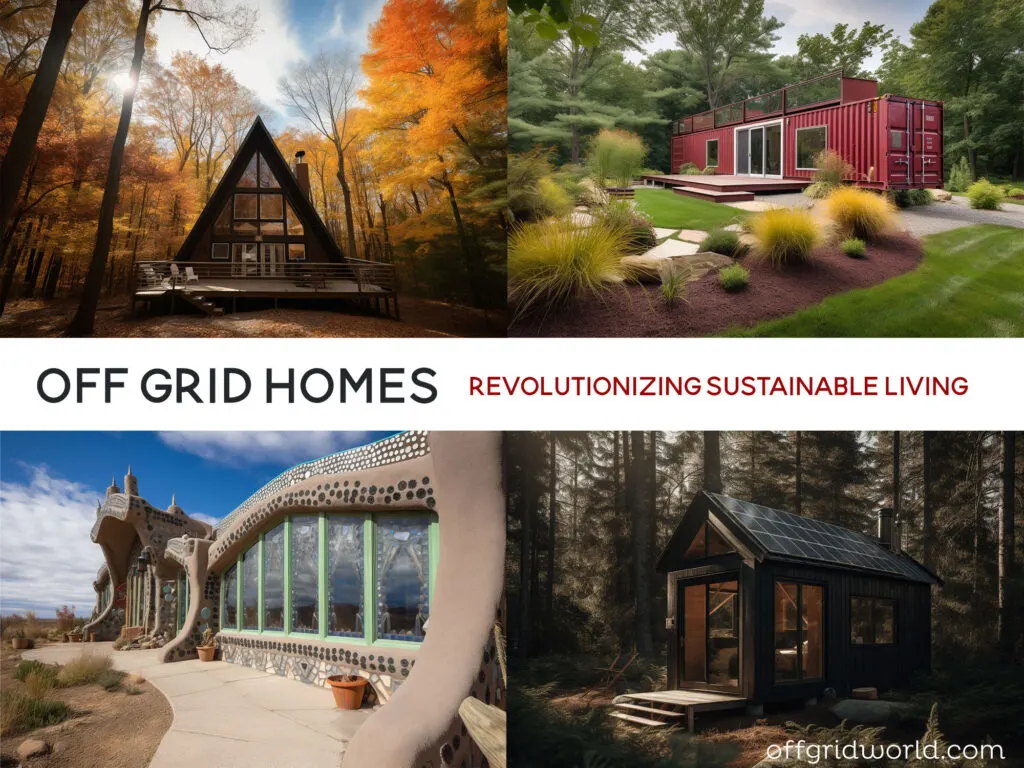Living off the grid offers an alternative lifestyle that many people are considering as a way to reduce their carbon footprint and live more sustainably. Here we’ll delve deep into the essence of off-grid homes, exploring their significance and the reasons for their increased popularity in our modern society.
An off grid home, by definition, is a self-sufficient dwelling and not reliant on public utilities such as electricity, gas, or water supply. These homes are structured to generate their power, use less energy, procure their own water, and manage waste in an eco-friendly manner.
The concept may lead some to envision a remote, rustic cabin, but in reality, off-grid homes can be as varied as the people who inhabit them.
The concept of off-grid living is not a novel one. In fact, it was the norm for most of human history until the rise of modern infrastructure and amenities led to a widespread dependence on communal resources.
However, in recent times, as environmental consciousness has grown and the value of self-sufficiency is being rekindled, off grid living has experienced a resurgence in the United States and other developed countries around the world.
Key Takeaways:
- Off-grid living involves creating a self-sufficient lifestyle that minimizes reliance on public utilities, promoting sustainability and independence.
- Various forms of renewable energy, including solar, wind, and hydro power, play vital roles in powering off-grid homes.
- The process of building an off-grid home requires careful consideration of location, resource availability, design, and regulatory compliance.
- Living off-grid presents unique challenges, including energy production, water supply, waste management, and internet access. However, these challenges can be effectively addressed with innovative solutions and careful planning.
- Off-grid homes come in many types and styles, including cabins, tiny houses, earthships, cob homes, shipping container homes, and other natural homes like earthbag homes. Each has unique characteristics that make it suitable for sustainable living.
Why is living off grid considered important in today’s context? What advantages does it offer?
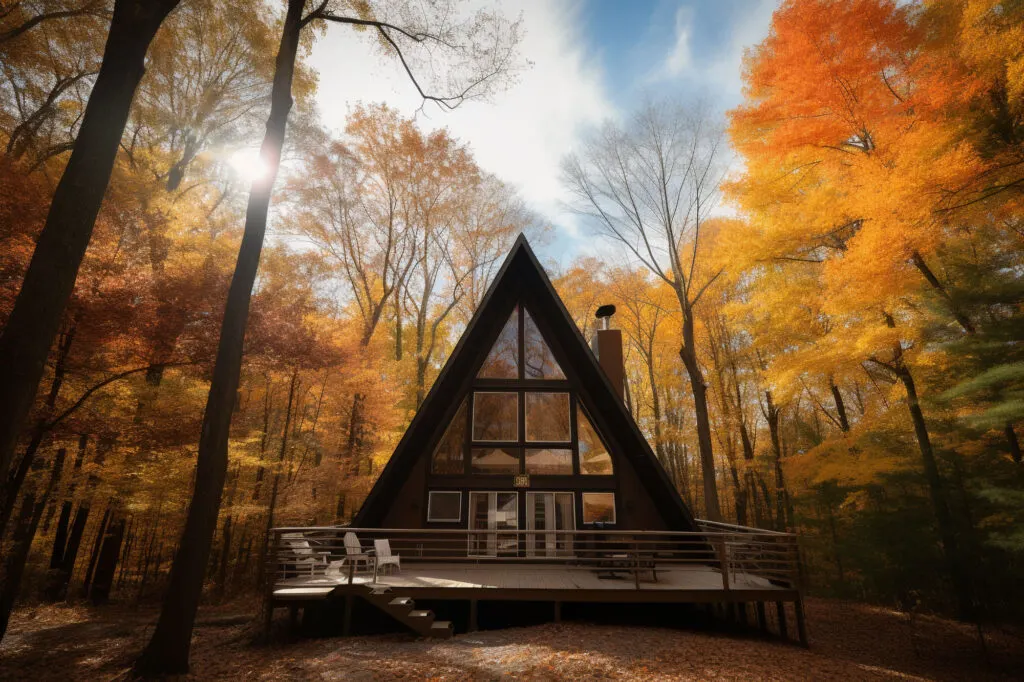
Understanding the concept of off grid living
Before diving into the essentials of off grid homes, we’ll briefly summarize the concept of off grid living , which we’ve covered extensively over the years. This includes its underlying philosophy, environmental impact, and financial implications.
The philosophy of off grid living is more than just disconnecting from the electrical grid. It centers around self-reliance, sustainability, and a deep respect for nature. It’s about taking responsibility for your needs and impacts rather than offloading them onto society or the environment.
Living off the grid encourages a simpler, slower lifestyle that emphasizes quality over quantity and relationship over consumption.
Environmentally, off grid living is one of the most sustainable ways to live. By using renewable energy sources like solar or wind power and responsibly managing water and waste, off grid homes significantly reduce their environmental footprint. Moreover, by disconnecting from the grid, these homes ease the demand on our often overburdened public utilities.
Financially, living off grid can offer significant savings in the long run, despite initial setup costs. Renewable energy sources replace traditional utilities, while smart, efficient design and technology decrease resource consumption. Over time, the savings from not paying monthly utility bills can add up to a substantial amount.
In essence, off grid living represents a conscious choice to step away from the resource-intensive norms of contemporary society and embrace a lifestyle that is at once liberating, challenging, and deeply fulfilling. It offers a way to live harmoniously with nature while fostering resilience and resourcefulness.
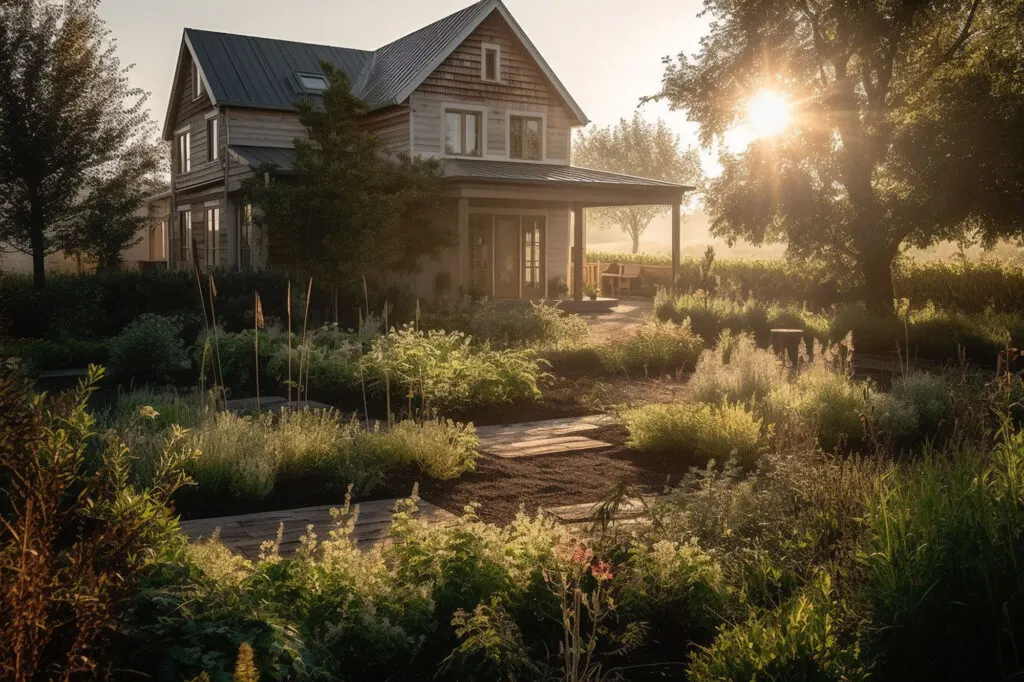
Key features of off grid homes
Now that we have a solid understanding of the philosophy and benefits of off grid living, let’s dive into the nitty-gritty: the core features that make a home off grid.
Self-sufficiency in energy production
Off grid homes rely on alternative energy sources, reducing reliance on fossil fuels.
1. Solar panels: These are the most common energy source for off-grid homes, converting sunlight directly into electricity. A solar array can be installed on the roof or on a ground mount, depending on the property.
2. Wind turbines: These are more site-specific, but for properties in windy areas, a small-scale wind turbine can be a great source of power.
3. Hydroelectric power: If there’s a running water source on the property, a micro-hydroelectric system can produce a steady, reliable energy source.
4. Bioenergy sources: These include everything from wood-burning stoves to biodigesters that convert organic waste into methane for cooking and heating.
Water systems
Off grid homes often rely on multiple systems to ensure a reliable water supply.
1. Rainwater harvesting: This involves collecting rainwater from roofs and storing it in tanks for later use.
2. Wells: Drilled deep into the ground, wells can tap into aquifers and provide a reliable source of fresh water.
3. Water purification systems: Off grid homes often use filters, UV light, or other purification systems to ensure the water is safe to drink.
Waste management systems
It’s not the most fun topic, but anyone living off the grid must handle their own waste responsibly. We’ve covered off grid septic systems before, but here are a couple of key concepts:
1. Composting toilets: These toilets turn human waste into compost that can be used to enrich the soil. These are often used on properties where a septic tank can’t be placed.
2. Greywater systems: Greywater, or the water from sinks, showers, and washing machines, can be reused for irrigation or other non-drinking purposes.
Food production and storage
While not a requirement, most self-sufficient homes incorporate elements of food production.
1. Home gardening and permaculture: Growing your own food and raising livestock reduces reliance on commercial food systems.
2. Preservation and canning: Storing food for off-season use helps ensure food security year-round.
These key features underline the self-sufficient nature of off grid living, allowing for a lower environmental impact and a greater degree of independence from public utilities.
Popular types of off grid homes
There are numerous architectural styles and designs that lend themselves well to living off grid. Each comes with unique features, advantages, and aesthetic appeal. Let’s explore some of the common types:
Cabins
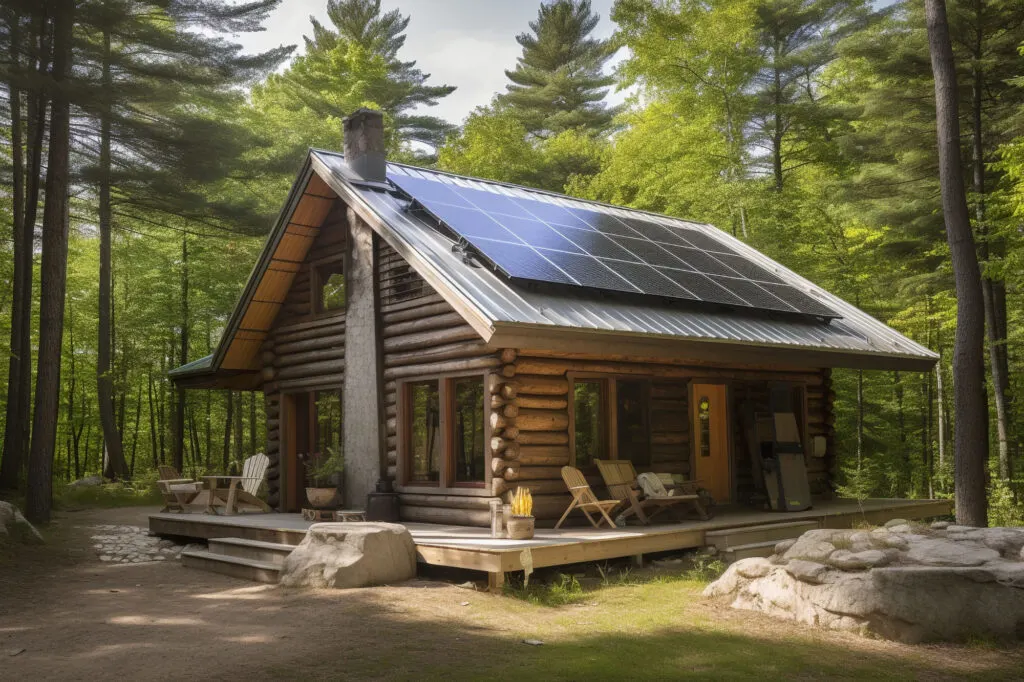
A classic choice for off grid living, cabins offer a rustic, cozy, and functional design that’s well-suited to many environments. They are often built using logs on the property and are perfectly suitable for cold and hot climates.
Their typically small size reduces energy needs, making them ideal for a solar-powered setup. Additionally, the remote locations of most cabins necessitate self-sufficiency, reinforcing the off-grid lifestyle.
Tiny Houses
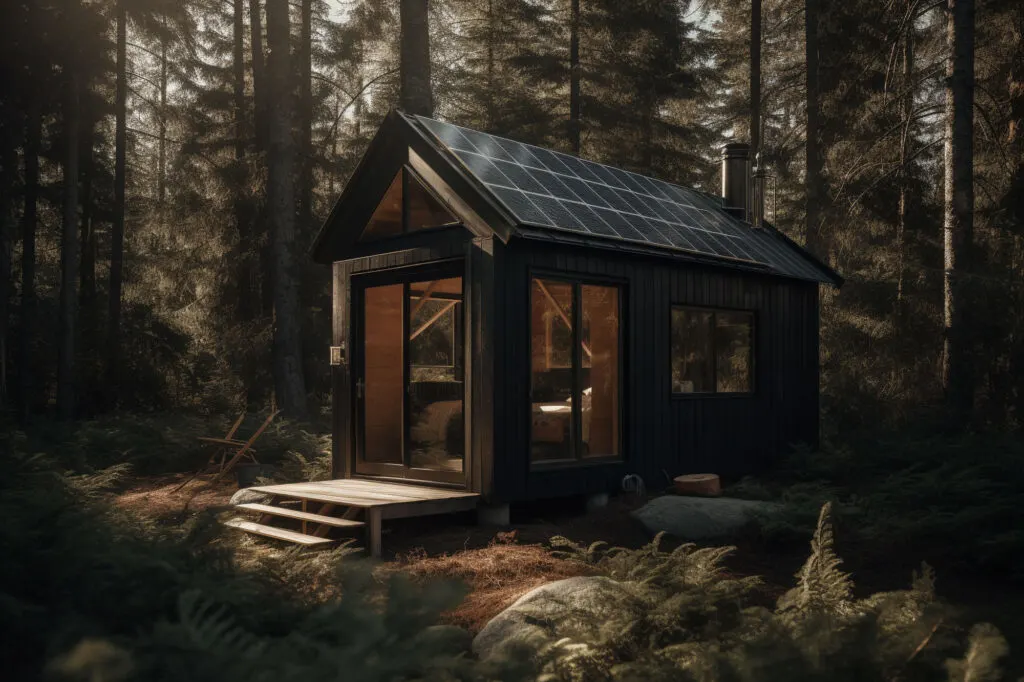
Tiny homes have gained massive popularity in recent years. They are compact, movable, and designed with efficiency in mind. The small space reduces energy needs, making renewable energy sources like solar panels or wind turbines more viable.
Moreover, the small footprint of tiny houses promotes a minimalist lifestyle, which aligns well with the principles of off-grid living. Some even come pre-equipped with features like rainwater collection systems and composting toilets.
Earthships
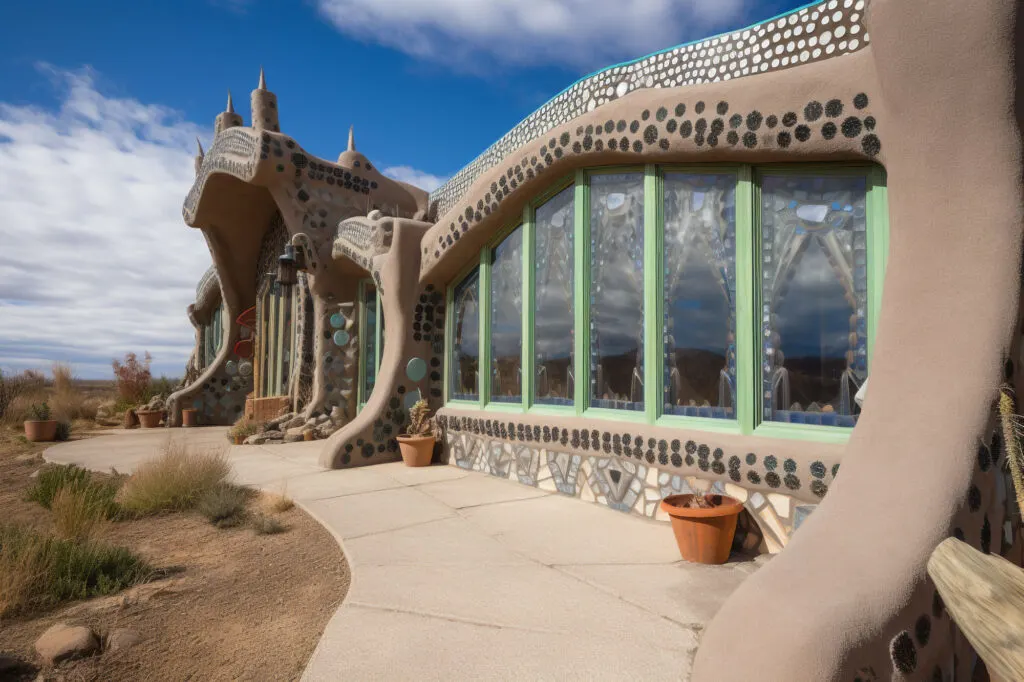
The ultimate off grid homes, Earthships are self-sustaining homes built primarily from recycled materials like tires, cans, and bottles, combined with earth. They use passive solar heating and cooling, rainwater harvesting, and solar/wind electricity.
The design incorporates greenhouses for food production, making them largely self-sustaining. Earthships have become emblematic of the off grid lifestyle due to their minimal environmental impact and self-sufficiency.
Cob Homes
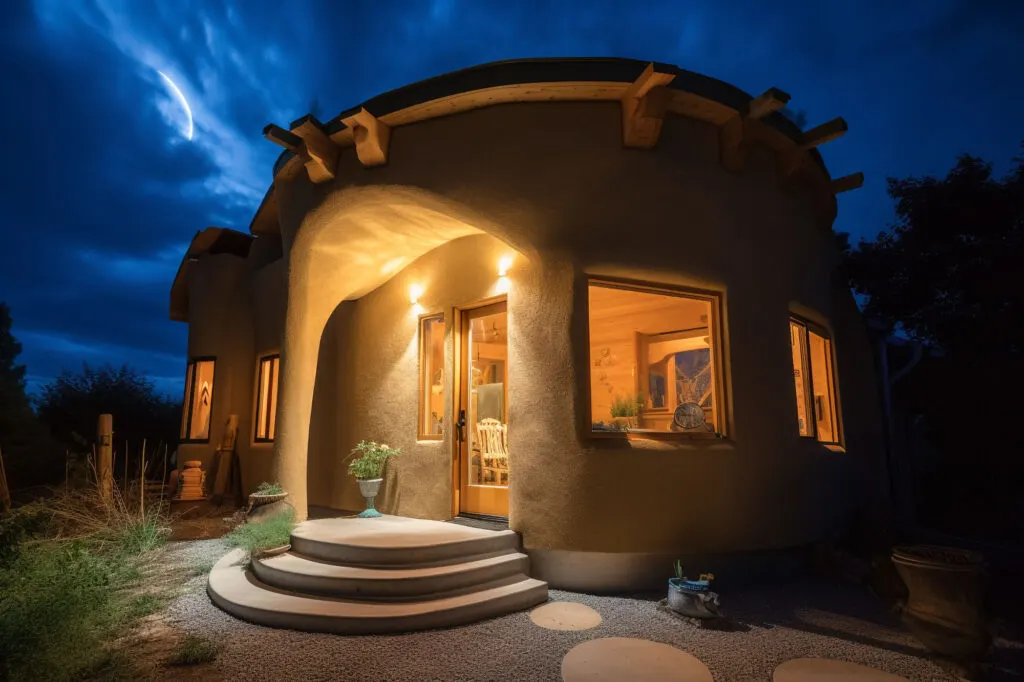
Cob homes, made from a mixture of clay, sand, straw, and water, are a testament to the longevity and resilience of natural building materials. This type of construction is durable, sustainable, and naturally insulated, making it energy-efficient for heating and cooling.
The materials for cob houses are often locally sourced and inexpensive, reducing the home’s environmental and financial footprint. They can be designed with beautiful, organic shapes, adding a unique aesthetic to their sustainable appeal.
Shipping Container Homes

Reusing shipping containers to create homes is a growing trend in the off-grid community. These homes are durable, modular, and relatively easy to set up. They can be fitted with solar panels, rainwater collection systems, and composting toilets to facilitate off-grid living.
Since the structure is already built, constructing a shipping container home can be quicker than traditional construction methods, allowing for a quicker transition to living off the grid.
Other Natural Homes (like Earthbag Homes)
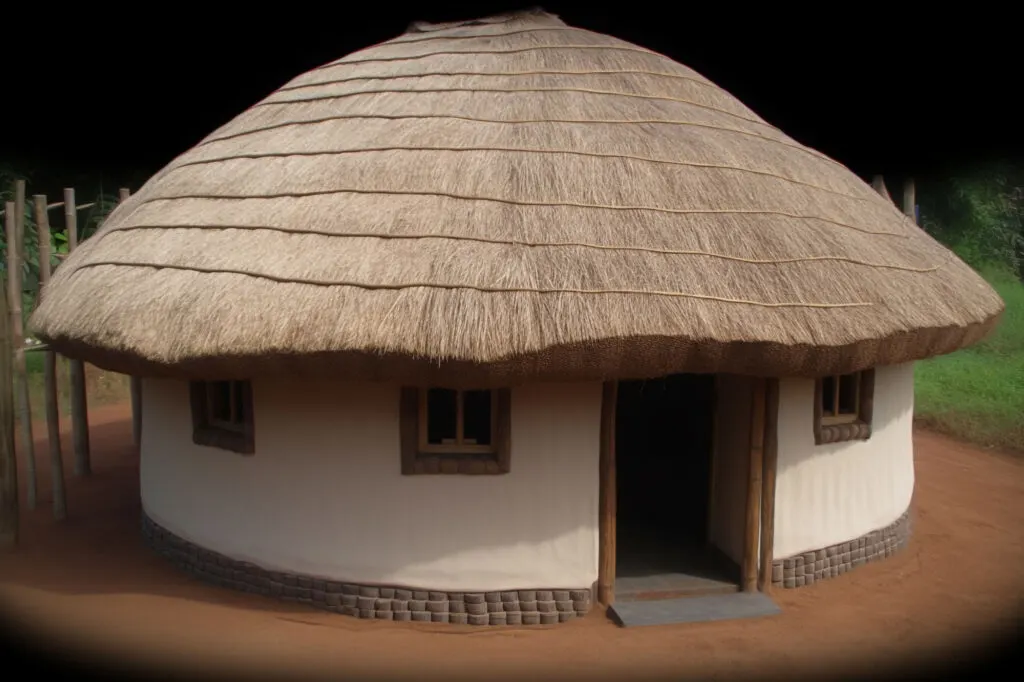
Earthbag homes, straw bale houses, and other natural homes use locally sourced, sustainable materials to create efficient, low-impact dwellings. Earthbag homes, for example, utilize bags filled with earthen materials, resulting in strong, well-insulated walls.
Natural homes are typically energy-efficient and can be built by hand, reducing construction costs. The use of natural materials helps these homes blend into their environment, reducing their visual impact while enhancing their aesthetic appeal. They are ideal for rural areas where natural materials are abundant.
Each of these off-grid homes offers a unique blend of sustainability, self-sufficiency, and harmony with the natural environment. The choice of which to build depends on various factors, including personal preferences, environmental conditions, available resources, and budget.
Whichever you choose, each offers a promising pathway to a fulfilling, sustainable lifestyle.
Essential technologies and appliances for off-grid homes
When living off-grid, it’s not just about managing resources – it’s also about optimizing usage. This is where technology and smart appliances come in. After all, living in a remote area doesn’t mean you have to sacrifice modern conveniences. Your off-grid house can be quaint and rustic or modern and full of high tech systems and amenities.
Energy-efficient appliances
Energy-efficient appliances are vital in off grid homes. Everything from LED light bulbs to Energy Star-rated appliances can help reduce the power demands, and therefore energy costs, of your household.
Battery storage and backup generators
As renewable energy sources can be intermittent, battery storage systems and backup generators are key for providing a consistent supply of power. Advanced battery technologies like lithium-ion batteries can store surplus power generated during the day for use during the night or cloudy days.
Heating and cooling systems
Efficient heating and cooling systems are crucial for comfort in an off-grid home. Options include passive solar design, wood-burning stoves, and energy-efficient HVAC systems in areas where air conditioning is necessary.
Smart home technology and monitoring systems
Smart home technologies allow for the efficient control and monitoring of home energy systems. These can help manage energy usage, monitor system performance, and even alert you to any issues with your off-grid systems.
By choosing the right technologies and appliances, off-grid homeowners can significantly increase the efficiency of their home, making the most of their resources while maintaining a high standard of living on their off-grid property.
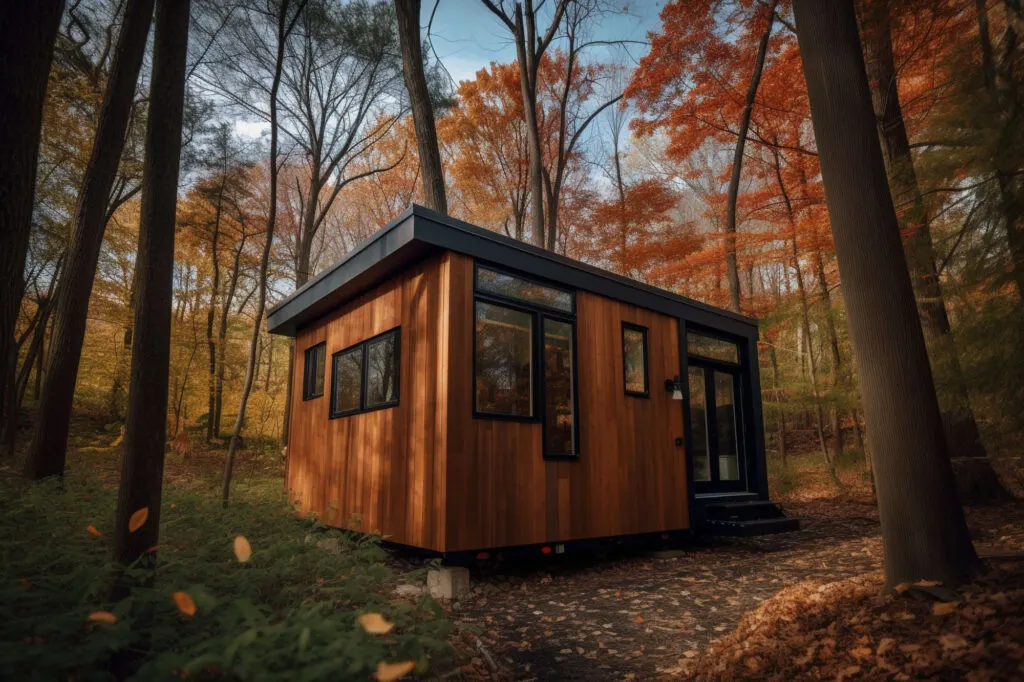
Building an off grid home
The process of constructing your home requires careful planning and consideration. Here are some steps to help guide you on your journey.
Evaluating and choosing a location
The location of your home plays a crucial role in your self-sufficient lifestyle. You’ll likely build in a remote location, and it is important to consider factors like climate, availability of water, soil quality for gardening, and exposure to sunlight for solar power.
Assessing the resources available at the chosen location
Once you’ve selected a location, assess the natural resources available to you. This includes the potential for solar, wind, or hydroelectric power, the availability of groundwater or surface water, and the suitability of the land for growing food.
The design and construction process
Designing an off-grid home goes beyond aesthetics; it involves creating a functional and energy-efficient space. Consider factors such as the home’s orientation to optimize passive solar heating and cooling, the size and placement of windows, insulation, and the integration of renewable energy systems.
Engaging professionals with experience in off-grid home design can be beneficial. Moreover, sustainable construction materials and techniques can further decrease your home’s environmental footprint.
Regulatory aspects to consider
Before you start building, make sure to understand and comply with local regulations and building codes. This could involve permits for building, drilling a well, installing a septic system, or generating renewable energy. Even if you’re building in a remote place, you’ll likely have to follow building codes and regulations.
Building an off-grid home is more than just a construction project; it’s a process of creating a sustainable and self-sufficient lifestyle. By carefully considering the location, resources, design, and regulations, you can create a home perfectly suited to your needs and the environment.
Real examples of off grid homes
Learning from those who have already made the leap to off grid living can provide invaluable insights. Here are some real-life examples of some of our favorite off grid homes around the world.
1. The off grid tiny house that has it all. This off grid home in New South Wales utilizes all kinds of sustainable technologies, including solar power, a biogas generator, rainwater collection, and a solar water heater.
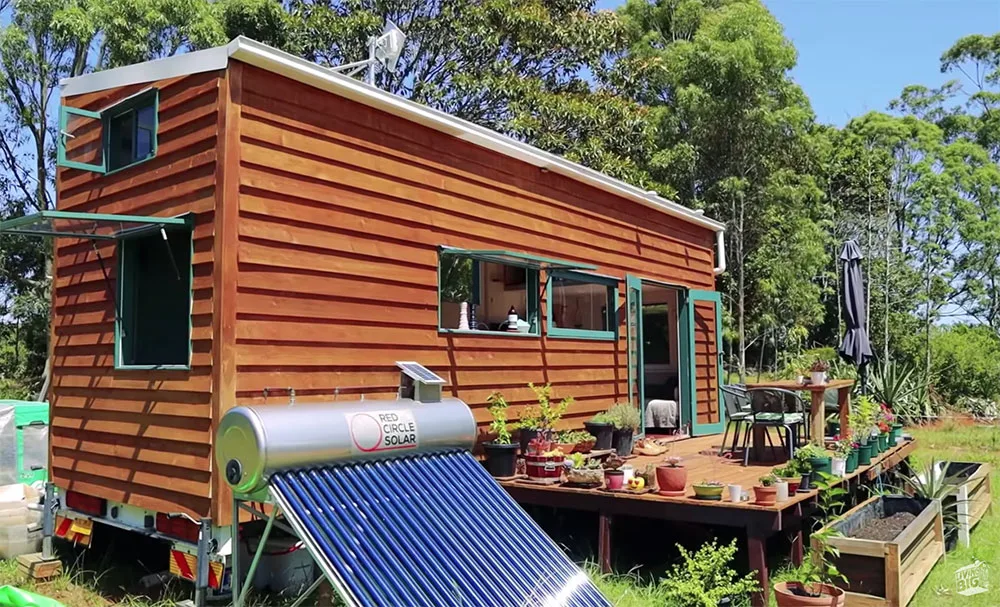
2. The shipping container home in Joshua Tree. This cozy shipping container has a rooftop deck and sits completely off the grid on 5 acres in Joshua Tree, California. It’s powered by solar energy and a septic system on the property handles wastewater.
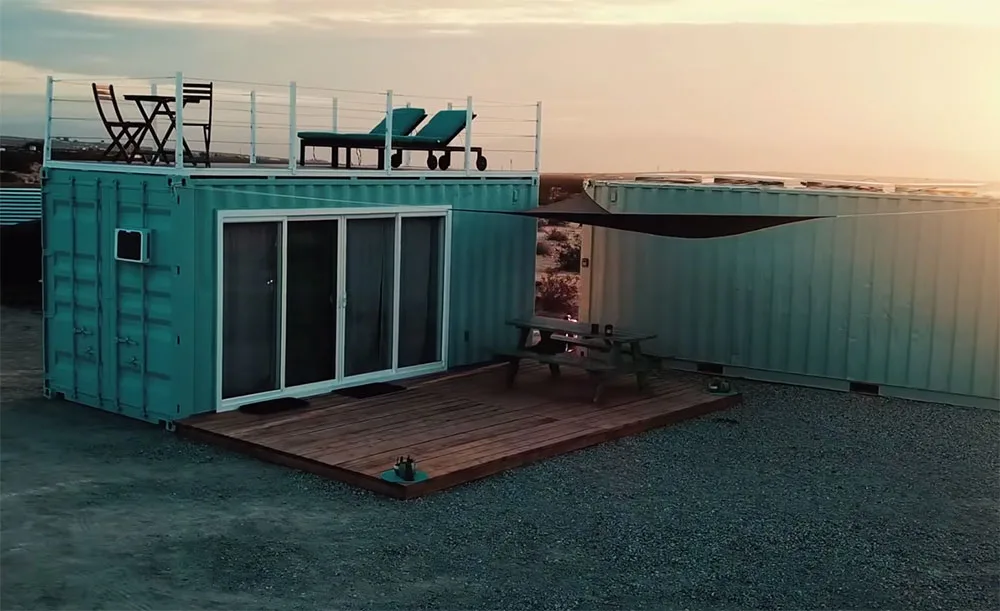
3. The earthship in California. Taylor and Steph Bode had no prior experience when they set out to build an off grid home. They learned the necessary skills and built this stunning 560-square-foot Earthship home in California’s Santa Cruz Mountains. The best part? They built this beautifully unique home for less than $10,000.
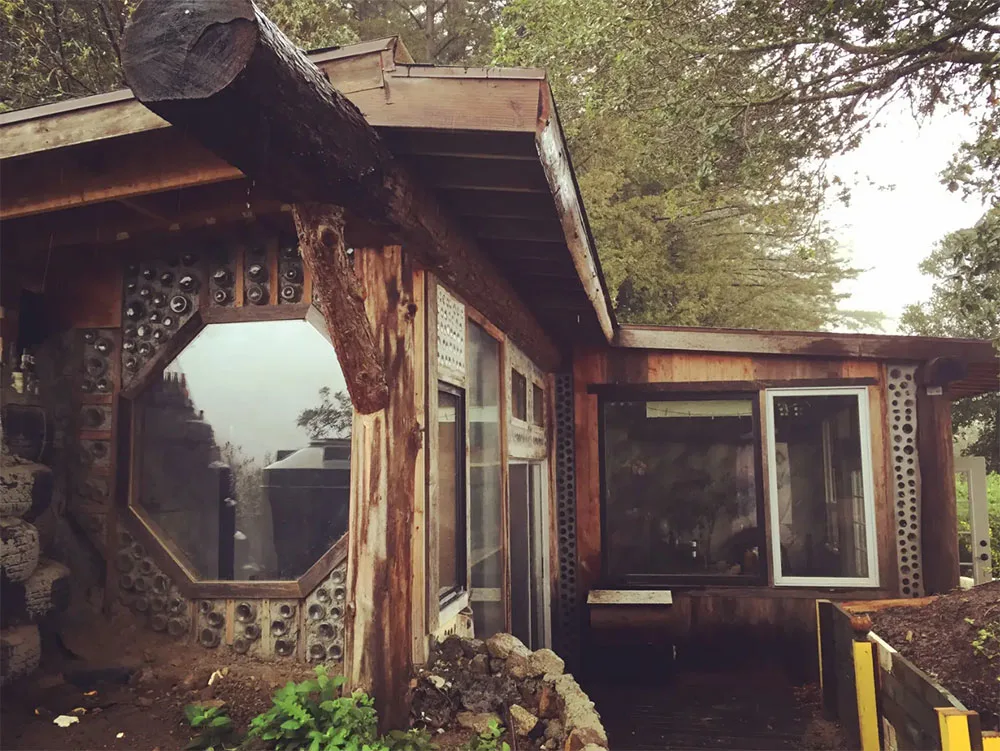
4. The A-frame cabin in the Catskills. This is one of the most popular off grid cabins we’ve featured. Built in the Catskill mountains of New York, it’s a beautiful example of how living off grid can be glamorous.
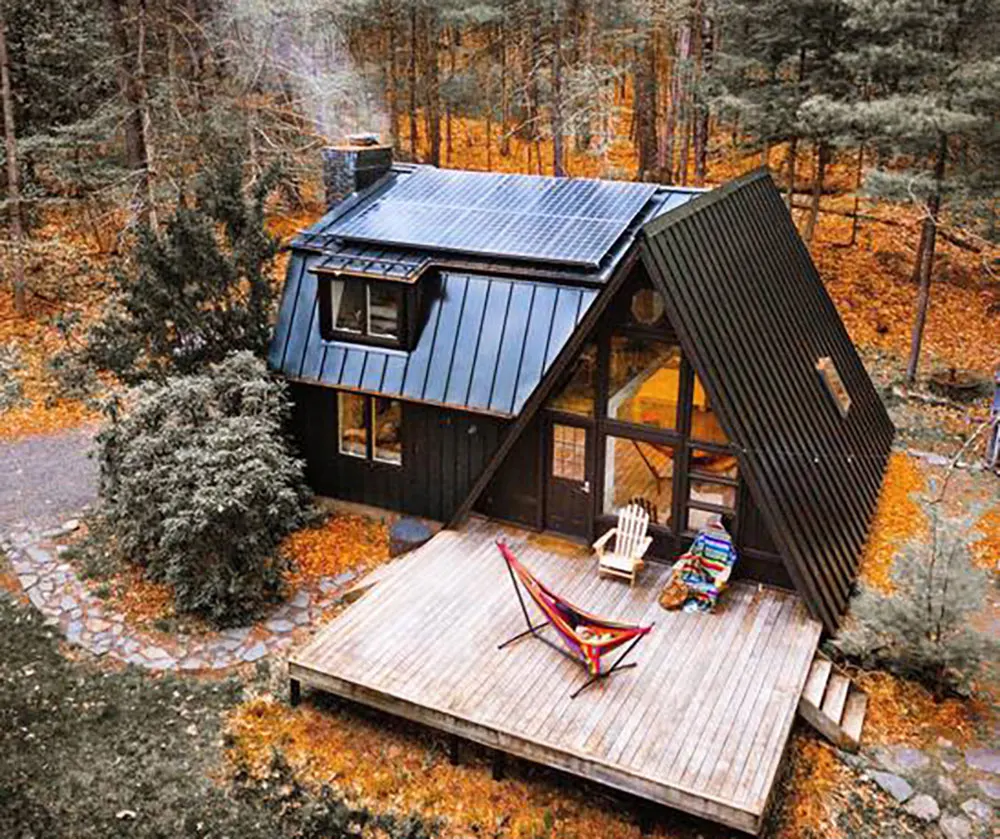
5. The tiny cabin in Canada. For those looking for small, simple, and quick, this little cabin is great inspiration. It’s less than 100 square feet and was built in less than 12 days! A little wood stove provides cozy heat in winter.
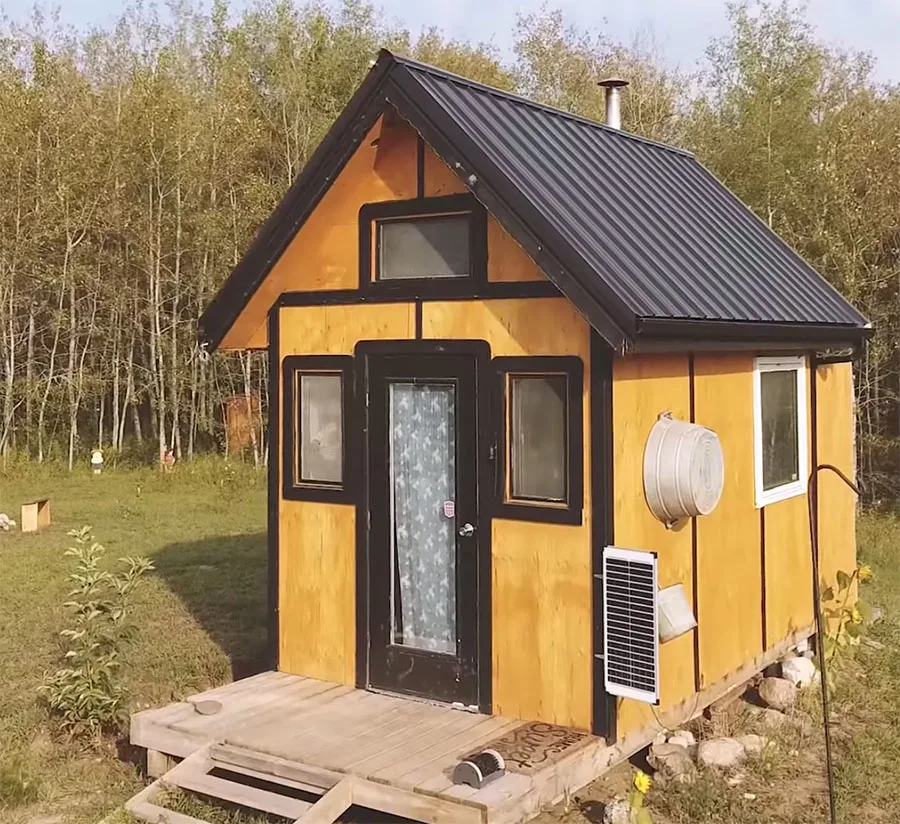
As you can see with these unique homes, the concept of life off the grid goes far beyond just living without public utilities. It’s about embracing a lifestyle that values sustainability, self-reliance, and a deeper connection with nature.
While the journey to off-grid living can be challenging, the rewards are profound. Not only does it provide an opportunity to lessen our environmental footprint, but it also offers a sense of freedom and independence that is increasingly rare in our modern, connected world.
Whether you’re considering a full transition or just want to incorporate aspects of off-grid living into your current lifestyle, remember that every step toward sustainability counts. As more people embrace this lifestyle, we collectively contribute to a greener and more sustainable future for our planet.
With innovation and technology continually evolving, the possibilities for off-grid living are expanding. This exciting frontier of sustainable living is not just a trend but a testament to our ability to adapt, innovate, and live in harmony with the natural world.
